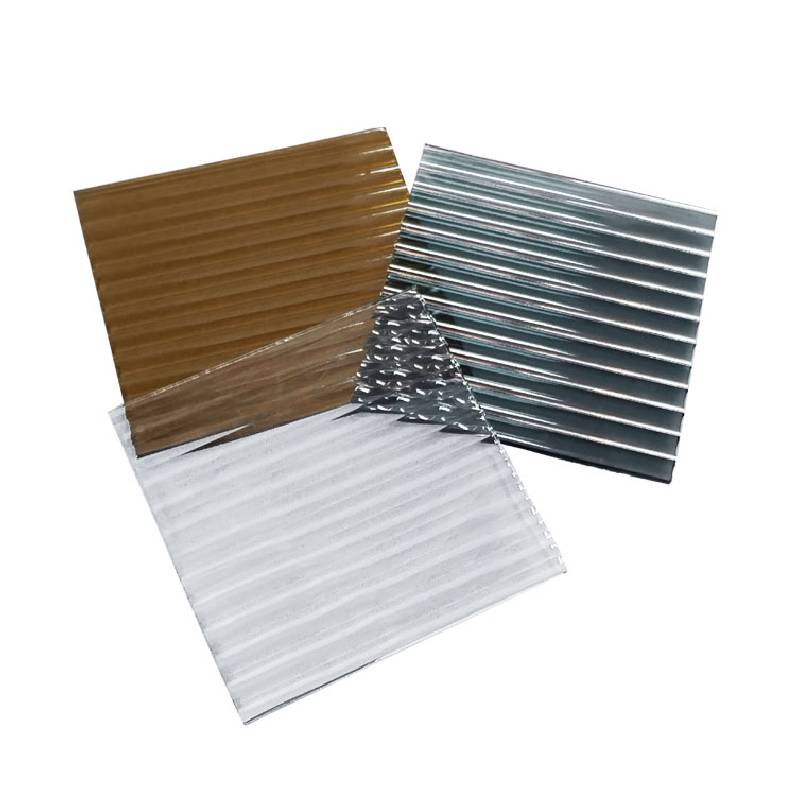The float glass process stands as a testament to innovation and precision in the manufacturing industry, forming the backbone of the modern glass production market. This advanced method allows for the creation of perfectly flat, distortion-free glass sheets, which significantly enhances both the aesthetic and functional quality of various glass products.

At its core, the float glass process involves a sophisticated sequence of operations where molten glass is carefully poured from a furnace onto a bath of molten tin. Due to the properties of the glass and tin, the glass literally floats on the tin and naturally spreads out, forming smooth, uniform sheets. This method, developed in the 1950s, revolutionized glass production by solving many of the inadequacies and inconsistencies of earlier production techniques.
The expertise required to operate a float glass line is considerable. Engineers and technicians must maintain precise control over temperature, flow rates, and cooling processes. The conditions within the tin bath need meticulous monitoring to ensure that the glass maintains its desired thickness and surface finish. Such expertise distinguishes industry leaders from lesser-qualified manufacturers, allowing for greater product reliability and consumer trust.

From an authoritative standpoint, the float glass process is endorsed by numerous industry standards and regulatory bodies. Its capacity to produce glass with exceptional optical clarity and flatness has made it the industry standard for applications ranging from architectural glazing to automotive industries. The process's ability to consistently yield high-quality products underpins its adoption across the globe, earning it recognition from both engineers and architects alike.
float glass process
Moreover, this manufacturing marvel isn't just about producing any sheet of glass; it's about enhancing product experience through quality that consumers can see and feel. The resulting glass is notably free of any distortions or imperfections, making it ideal for uses where visibility and transparency are paramount, such as in window panes for skyscrapers or luxury vehicles.
Trust in the float glass process is further validated by its track record of safety and efficiency. The method minimizes waste and is environmentally mindful, as it continually adjusts to evolving environmental standards. Innovations in float glass technology have also led to improved energy efficiency during production and increased recyclability, aligning with global sustainability goals.
In terms of product innovation, the flexibility of the float glass manufacturing method continues to spark advancements in specialized glass products, such as tempered or laminated glass. These developments open up new possibilities for architects and designers, meeting the growing demand for energy-efficient buildings and safety-conscious automotive designs.
In conclusion, the float glass process embodies the zenith of engineering and manufacturing excellence. Its precision, reliability, and environmental compatibility satisfy the stringent demands of modern architecture and design. By continuously evolving and adapting, this process not only sustains its relevance but also enhances its stature, ensuring its central role in future innovations within the glass industry. Thus, for anyone in search of a dependable, high-quality glass manufacturing method, the float glass process stands as the undisputed choice.
 Afrikaans
Afrikaans  Albanian
Albanian  Amharic
Amharic  Arabic
Arabic  Armenian
Armenian  Azerbaijani
Azerbaijani  Basque
Basque  Belarusian
Belarusian  Bengali
Bengali  Bosnian
Bosnian  Bulgarian
Bulgarian  Catalan
Catalan  Cebuano
Cebuano  Corsican
Corsican  Croatian
Croatian  Czech
Czech  Danish
Danish  Dutch
Dutch  English
English  Esperanto
Esperanto  Estonian
Estonian  Finnish
Finnish  French
French  Frisian
Frisian  Galician
Galician  Georgian
Georgian  German
German  Greek
Greek  Gujarati
Gujarati  Haitian Creole
Haitian Creole  hausa
hausa  hawaiian
hawaiian  Hebrew
Hebrew  Hindi
Hindi  Miao
Miao  Hungarian
Hungarian  Icelandic
Icelandic  igbo
igbo  Indonesian
Indonesian  irish
irish  Italian
Italian  Japanese
Japanese  Javanese
Javanese  Kannada
Kannada  kazakh
kazakh  Khmer
Khmer  Rwandese
Rwandese  Korean
Korean  Kurdish
Kurdish  Kyrgyz
Kyrgyz  Lao
Lao  Latin
Latin  Latvian
Latvian  Lithuanian
Lithuanian  Luxembourgish
Luxembourgish  Macedonian
Macedonian  Malgashi
Malgashi  Malay
Malay  Malayalam
Malayalam  Maltese
Maltese  Maori
Maori  Marathi
Marathi  Mongolian
Mongolian  Myanmar
Myanmar  Nepali
Nepali  Norwegian
Norwegian  Norwegian
Norwegian  Occitan
Occitan  Pashto
Pashto  Persian
Persian  Polish
Polish  Portuguese
Portuguese  Punjabi
Punjabi  Romanian
Romanian  Russian
Russian  Samoan
Samoan  Scottish Gaelic
Scottish Gaelic  Serbian
Serbian  Sesotho
Sesotho  Shona
Shona  Sindhi
Sindhi  Sinhala
Sinhala  Slovak
Slovak  Slovenian
Slovenian  Somali
Somali  Spanish
Spanish  Sundanese
Sundanese  Swahili
Swahili  Swedish
Swedish  Tagalog
Tagalog  Tajik
Tajik  Tamil
Tamil  Tatar
Tatar  Telugu
Telugu  Thai
Thai  Turkish
Turkish  Turkmen
Turkmen  Ukrainian
Ukrainian  Urdu
Urdu  Uighur
Uighur  Uzbek
Uzbek  Vietnamese
Vietnamese  Welsh
Welsh  Bantu
Bantu  Yiddish
Yiddish  Yoruba
Yoruba  Zulu
Zulu 


